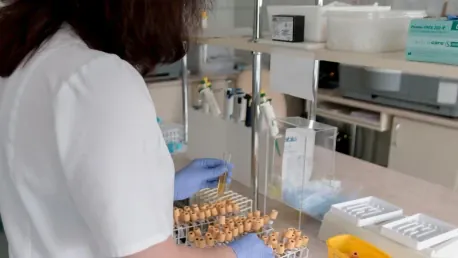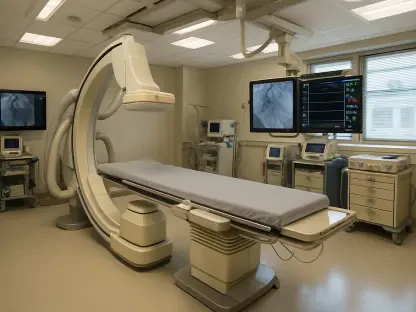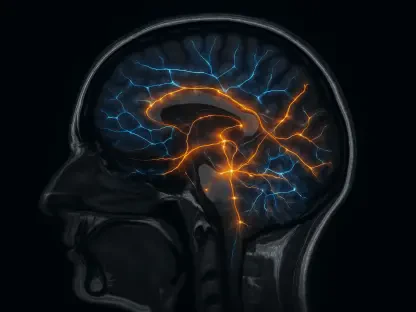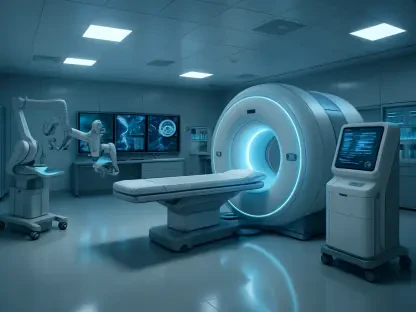The recent job cuts in U.S. health agencies, particularly those under the Department of Health and Human Services (HHS), have sparked significant concern among public health experts and industry professionals. These layoffs, driven by the Trump administration’s policies, could have far-reaching effects on public health, scientific research, and regulatory processes in the United States. Delving into the implications of these cuts, we focus on their impact on the Food and Drug Administration (FDA), Centers for Disease Control and Prevention (CDC), and National Institutes of Health (NIH).
Broad Impact on Health Ecosystem
Threats to Disease Monitoring and Research
The reduction in workforce across various health agencies poses a significant threat to the nation’s ability to monitor diseases effectively. Fewer personnel at the CDC means that the capacity to track and respond to disease outbreaks could be severely compromised. Effective disease monitoring requires constant vigilance and a sizeable, dedicated workforce that can quickly mobilize resources during health crises. With staffing cuts, the ability to maintain this level of preparedness diminishes, risking delayed responses and increased severity of outbreaks.
Similarly, the NIH, known for its groundbreaking scientific research, faces substantial hurdles. The ability to conduct innovative research that leads to medical advancements could be significantly hindered by these layoffs. Research projects often span several years and rely on the accumulated expertise of many scientists and researchers. With a reduced workforce, the progress of ongoing projects could slow down, and some could even face early termination. The potential delay in medical breakthroughs undermines efforts to combat serious diseases such as cancer, heart disease, and emerging infectious diseases.
Regulatory Oversight Challenges
The FDA, charged with regulating drugs, medical devices, and food safety, faces significant challenges due to these job cuts. Experts warn that reducing staff could slow down the approval process for new drugs and devices, ultimately affecting public health. New medications and medical devices are vital for treating various health conditions, and any delay in their approval can have serious repercussions for patients awaiting new treatment options. Moreover, the thoroughness and accuracy of the approval processes might suffer, leading to concerns about the safety and efficacy of regulated products.
Increased errors and oversight lapses are potential risks as the remaining staff may struggle to manage the same workload without adequate support. Effective regulation requires not only a breadth of knowledge but also a collaborative effort across multiple departments within the FDA. Staff reductions impede this collaboration, contributing to broader risks in public health and safety, which extend to every American who relies on these essential regulatory bodies for safe and effective healthcare options.
Unclear Numbers and Targeted Agencies
Lack of Transparency
Reports indicate that up to 5,000 HHS employees might be dismissed, but exact numbers remain unclear. The lack of transparency in the process adds to the anxiety and uncertainty within the affected agencies. Detailed public documentation explaining why specific agencies and personnel were targeted has not been provided, leading to speculative reasoning about the criteria used for these job cuts. This ambiguity fuels concerns about the fair execution of layoffs and the strategic thinking behind these decisions.
In essence, without clear communication from the administration about the goals and thought process underlying these cuts, speculation and fear replace reasoned planning. It is vital in a democratic society that such drastic measures are undertaken with widespread public and professional input, ensuring all stakeholders understand and are involved in managing these changes effectively.
Impact on FDA Offices
The FDA has seen varying impacts across its different offices. For instance, the office responsible for regulating medical devices experienced significant cuts, with at least 230 staff members being laid off. This substantial reduction in workforce within a critical area could leave important regulatory tasks unattended or inadequately managed, heightening the potential risks to public safety. Medical devices encompass a broad range of products, from simple bandages to complex pacemakers, all of which require stringent regulation to ensure safety and efficacy.
As certain FDA offices face more scrutiny and greater workloads due to emerging scientific fields and technologies, such as artificial intelligence in medical diagnostics, losing skilled personnel hampers their capacity to stay current and effective. An already challenging landscape becomes nearly unmanageable as fewer employees are left to oversee an ever-growing number of new products and innovations. This strain on resources within the FDA could lead to long-term public health risks and setbacks in technological adoption.
Expert Criticisms and Concerns
Disruption of Learning Chains
Experts like Kenneth Kaitin emphasize the importance of preserving the “learning chain” within the FDA. The development of regulatory expertise is vital for effective management within the agency, and the termination of newer personnel disrupts this critical chain. Newer employees typically engage in significant training and mentorship from experienced staff, gradually gaining the expertise needed to handle complex regulatory issues efficiently.
This disruption has long-term implications. Regulatory approval processes depend heavily on institutional knowledge and the ability to apply past experiences to new challenges. By cutting staff, particularly those in early stages of their careers, the FDA risks losing a generation of professionals who would have otherwise continued to build upon and improve the agency’s capabilities. It is not merely the lost number of employees, but rather the interruption of growth and continuity that poses a substantial threat.
Ill-Advised and Indiscriminate Cuts
Critics argue that the job cuts were carried out haphazardly and without proper consideration of their broader impact. The targeted employees, often probationary personnel, include both new hires and recently promoted staff members. This approach undermines the agency’s growth in newly prioritized areas such as artificial intelligence and nutrition. These fields are increasingly important for future public health innovations, and cutting employees positioned to advance these areas is seen as short-sighted.
Furthermore, the indiscriminate nature of these cuts suggests a lack of strategic planning. Unlike a surgical reduction that targets inefficiencies while preserving core competencies, these layoffs seem to hit essential functions indiscriminately. James Shehan and Patti Zettler liken this approach to hitting a steak with a sledgehammer rather than skillfully cutting the fat. Such a method risks causing more harm than good, with long-term detriments far outweighing any short-term fiscal savings.
Industry Response
Silence from Major Lobby Groups
The pharmaceutical industry and its lobbying groups have remained predominantly silent on the issue. While organizations like the Biotechnology Innovation Organization and Advamed have highlighted potential threats to health and security, major pharmaceutical lobby groups like PhRMA have strategically avoided conflict with the administration. This silence is notable, considering the significant role these industries play in public health and their reliance on a functional regulatory body.
Industry leaders’ reticence may be explained by a desire to maintain favorable relations with the administration, yet it strikes a jarring note given the widespread concern among public health professionals. The absence of a unified and vocal response from key industry groups contrasts sharply with the alarm expressed by experts in the field.
Potential Threats to Innovation
The job cuts could potentially reverse decades of progress in medical and technological advancements that have been built upon a stable and growing workforce. Innovation within the biomedical ecosystem relies not just on brilliant minds, but also on a conducive environment where research, development, and regulation work seamlessly in tandem. Staffing reductions interfere significantly with this balance, potentially stymying the development of new treatments and therapies.
The potential stagnation in innovation carries profound implications. The pace of medical progress is pivotal not only to improving health outcomes but also to maintaining America’s position at the forefront of global biomedical research. The threat posed by these job cuts extends beyond immediate public health risks to the very fabric of national capability in health innovation, which requires both stability and growth in its human and technical resources.
Long-Term Implications
Strain on Regulatory Capacities
The Trump administration’s policy includes an executive order capping future hiring, allowing only one new employee for every four lost. This cap complicates the already grave situation, likely exacerbating existing challenges and placing further strain on regulatory capacities of health agencies. Maintaining the integrity and efficacy of drug and device regulation becomes increasingly difficult under such restrictive conditions.
Experts agree that an under-resourced and overburdened FDA will struggle to keep up with the volume and complexity of new product developments. The agency’s ability to ensure safety and efficacy standards is compromised, heightening the risk of public health crises. Long-term, such a policy could significantly weaken the FDA’s regulatory framework, thereby increasing vulnerability in health and safety sectors.
Urgent Calls for Reconsideration
The recent wave of job cuts across U.S. health agencies, especially within the Department of Health and Human Services (HHS), has raised considerable concern among public health experts and industry professionals. These layoffs, instigated by the policies of the Trump administration, are anticipated to have extensive repercussions on public health, scientific research, and regulatory processes in the nation. Examining the consequences of these reductions in workforce, the spotlight falls on their impact on key agencies such as the Food and Drug Administration (FDA), Centers for Disease Control and Prevention (CDC), and National Institutes of Health (NIH). Each of these agencies plays a crucial role in maintaining the integrity of public health infrastructure, overseeing medical and scientific research, and regulating drug approvals and disease prevention measures. As these institutions face staffing shortages, their ability to effectively carry out their missions and ensure public safety is potentially jeopardized.









